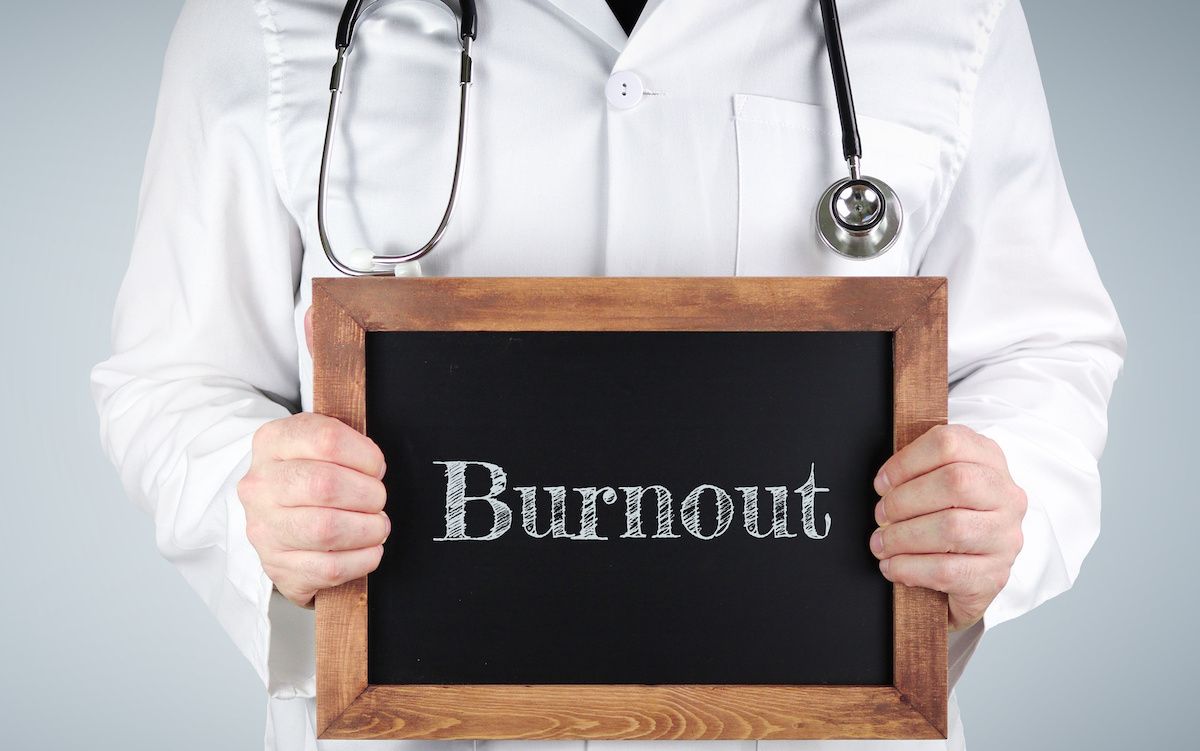Article
Physician burnout levels reached new highs in 2021
Author(s):
Workplace factors play major role in determining job satisfaction, intention to leave

A recently-published study confirms what many health care practitioners have long suspected: the COVID-19 pandemic has driven burnout levels in their ranks to record highs.
The study found that by the fourth quarter of 2021 burnout rates among doctors, residents and advanced practice clinicians had reached about 60%—“the highest levels ever recorded to our knowledge,” the study’s authors say.
In addition, approximately 40% of respondents to the survey on which the study is based reported at the end of 2021 that they intended to leave their job.
Using a tool known as the Mini Z work-life measure, the authors surveyed 20,627 physicians and advanced practice clinicians at 120 health care systems nationwide between February 2019 and December 2021. Their goals were to measure trends in burnout, job satisfaction and intent to leave before and during the pandemic, and determine factors that might either contribute to or lessen these feelings.
The results showed an overall burnout rate of 49% during the period but significant fluctuations over time. Starting at 45% in early 2019, it declined through the rest of the year then rose briefly at the start of 2020. It subsequently dropped again during the early phases of the pandemic before climbing to 50% at the end of 2020 and continuing to rise to around 60% in the final months of 2021.
Intent to leave increased from 24% in 2019 to more than 40% in late 2021, changing in inverse proportions to reported job satisfaction levels.
Although rates of burnout and intent to leave increased overall during the study period, they varied significantly due to factors such as levels of chaos in the workplace, degree of control over work and feelings of being valued.
For example, in the final quarter of 2021 burnout was 37% among those who felt valued compared to 69% who did not. Similarly, those reporting good control over their work reported burnout levels of 39% versus 75% for those without work control. And levels were 36% among practitioners in calm environments compared with 78% in chaotic environments.
Based on their findings, the authors recommend that health care institutions create a set of key performance indicators to measure work stressors, such as lack of control over workloads and schedules; burnout mitigators, such as teamwork and feelings of being valued; and provider outcomes, such as job satisfaction and intent to leave. This strategy, “could provide measurable and remediable work conditions and outcomes…for protection of the health care team,” and “serve as an early warning system during times of stress to identify challenges and opportunities to improve the work environment.”
The study, “Trends in Clinician Burnout With Associated Mitigating and Aggravating Factors During the COVID-19 Pandemic” was published November 23 in JAMA Health Forum.





